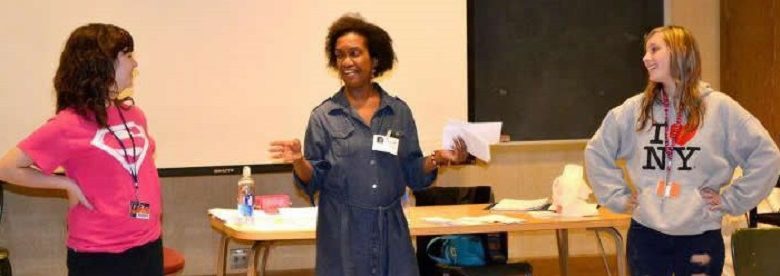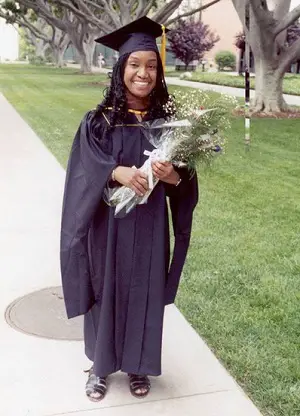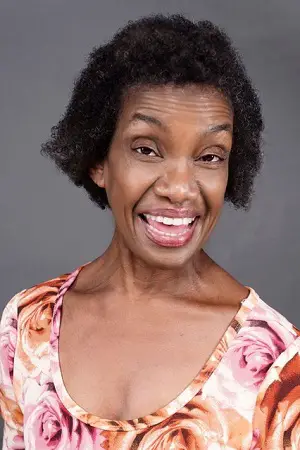
How disabled actress and activist Diana Elizabeth Jordan is creating change for other disabled artists
Disabled actress Diana Elizabeth Jordan, who has cerebral palsy, wanted to be an actress from a young age. But she’s also more than an actress – she’s a director, speaker and disability activist, amongst other things, and works as an acting coach at a performing arts studio for adults with developmental disabilities. We speak to Diana about her career to date and the role of disabled actors and actresses in today’s society.
Diana’s career has been varied. Having started acting in theatre, she’s gone on to appear in TV and film, including American series S.W.A.T., the film Elderly Lady and the award-winning movie Best Friend. This year she is going behind the camera as a director for Easterseals Disability Film Challenge, a 56-hour film competition. She has directed theatre before, but this will be her first directing role in film.
Diana herself says she’s been privileged to have not always been cast in disability-specific roles. Working as a disability activist, she’s keen for other disabled actors and actresses to have more opportunities in theatre, film and television, and for them to not always have to play a disabled person. Read on to find out more about her career and hopes for changes within the industry.
Please tell Disability Horizons readers a bit about yourself?
I am a multi-passionate artist with cerebral palsy, which mildly affects my speech and gait. I have always known that, because of my disability, I would have to create my own path if I wanted to achieve my dreams and goals. For disabled artists, there isn’t a traditional path to follow.
My passions also extend beyond acting. I describe myself as ‘one actor with many passions’. As well as an actress, I am a director, producer, speaker, artist educator-facilitator, activist and aunt to my nephews, James 11 and Jordan 8. Being an aunt is my favourite role.

I am also an entrepreneur and the founder of The Rainbow Butterfly Café, a production company with a mission to eradicate disability and ‘othering’ stigmas through the power of the arts. We offer workshops and put on one-person shows to schools, colleges, universities, retreats, corporations and conferences.
You have lived in LA, a hotspot for actors and actresses, for more than 20 years now. But what was your journey like getting there?
I grew up in Oak Park, Illinois, which is a suburb of Chicago. After obtaining my Bachelor’s degree in Theater and Media Arts at The University of Kansas, I returned to Chicago. That was in the late 80s and Chicago’s theatre scene was growing.
I worked a lot in Chicago theatres into the 90s, and was very fortunate to be cast in a lot of roles that were not disability specific. Because of the American With Disabilities Act being passed in 1990, companies were keen to meet the regulations. I meant that I was also cast in a lot of industrial films (in house films for companies and corporations).
Encountering attitudinal barriers posed a challenge, yet securing roles as an actress turned out to be fantastic.
Those years in Chicago were when my activism was fostered and nurtured. As much as I loved living and working in Chicago, I also had ambitions to move to Los Angeles, a mecca for a lot of actors and actresses. I didn’t want to get to a point in my life and wonder “what if?” Chicago is also very cold half the year!
I decided the best way for me to make the move was to go to graduate school there. So, in late 1997, I decided to apply for MFA Acting programs at several schools in Southern California. I was accepted into the MFA Acting Program at California State University Long Beach in the spring of 1998, and moved that summer to begin studying in the fall.
I graduated in 2001 and was the first actress with a disability to obtain a Masters of Fine Arts in Acting.
Since then I have been enjoying the wonderful, challenging, sometimes frustrating and joyful journey of continuing to pursue my childhood dreams. It is still hard for me to believe I have been out here for so long. But it was the best decision I ever made.

What attracted you to begin a career as an actress?
Performing is something I always knew I wanted to do. It felt like a calling at an early age. I was one of those kids in school who, if I could have, would have turned every assignment into a performance, even maths! There were, however, two truly defining moments for me as a young girl that solidified my dream.
One was seeing Romeo and Juliet in Oak Park, where I grew up, when I was about 11. It had a theatre company that would put on Shakespeare plays every summer. I still remember the moment when (spoiler alert) Romeo killed Tybalt. The actors were fighting a platform and when Tybalt “died” the actor playing him fell from the platform and was caught by the actors below. I still, to this day, can remember hearing the audience gasp.
The second was seeing Cecily Tyson’s powerful performance in Sounder. It was a magical and awe-inspiring moment for me. I knew I wanted to spend the rest of my life creating the magic too.
I was also fortunate to go to a high school that had a fantastic performing arts department. I was equally fortunate to have teachers who were encouraging and not discouraging.

What has been your greatest accomplishment as an actress?
I would like to think I haven’t had it yet, that there is a lot more to come. But there certainly have been many ‘magical moments’, as I call them, in my career so far. I was thrilled to do a photo shoot for the digital copy of Variety Magazine’s feature on Hollywood and disability.
I also am very proud to have been honoured with the Best Actor award at the Easterseals Disability Film Challenge in 2016, and with a Tradition of Excellence Award from my former high school 2012. To receive such a wonderful honour on the same stage where my young dreams were first nurtured was a very special moment.
Most importantly though, any time I get a role that was not written as a disability-specific one feels like a great accomplishment. It truly highlights the progress that my fellow performers with disabilities/disabled activists and I have made advocating for the inclusion of authentic disabled images in theatre and television.
It is through these powerful storytelling mediums that we can reflect and show that disability is part of the inclusive and multicultural diversity of the world and tell yet to be told stories of disability, history and culture.
What advice would you give to your 16-year-old self?
I would tell her to trust her dreams and be patient. Your dreams may not manifest in the way you think they will, but the way your dreams unfold will be wonderful and amazing. Oh, and you’ll get over Mackson, he will barely be a blip in your thoughts!

What do you think about able-body actors playing disabled characters?
For me, it’s sad because it means a talented actor with a disability was denied an opportunity to work or to have a life-changing role. It also saddens me that this is still an issue for debate and discussion. But I am also glad that the issue is getting more and more attention on national media platforms.
What also concerns me is the idea that disability is something an actor can learn to do, like a technical skill. There are skills that an actor may have had to learn or research for any role. But learning how to be blind, using a wheelchair or being deaf, shouldn’t be one of them. Actors don’t ‘learn’ how to be Asian or African American.
I love what my friend, actor and activist Christine Bruno once said: “‘Disability is a lived experience.” You can’t and shouldn’t just ‘learn’ it.
I also think that by casting non-disabled actors to play disabled characters, you deny the authenticity of disability. The audience sees the disability as something the non-disabled is ‘faking’ for the role. But for many people, whether acquired at birth or later in life, disability is a life-long experience.
There are more than 56 million people who live with some type of disability. We are the largest and most diverse minority that intersects with all other identities – race, age, religion, gender identity and sexual preference.
Just like other cultures and identities, I would like to see diverse images of disability authentically represented and portrayed by our talented artists with disabilities, both in disability-specific and non-disability specific roles stories and storylines.
By Disability Horizons
You can visit Diana Elizabeth Jordan‘s website and follow her on Facebook to find out more about her work as an actress and activist.
More on Disability Horizons…
- Top 10 disabled celebrities from across the world
- Getting into the arts – no matter what your disability
- Interview: Emmerdale’s disabled actor James Moore on making disability ‘normal’
Originally posted on 15/03/2019 @ 1:16 am